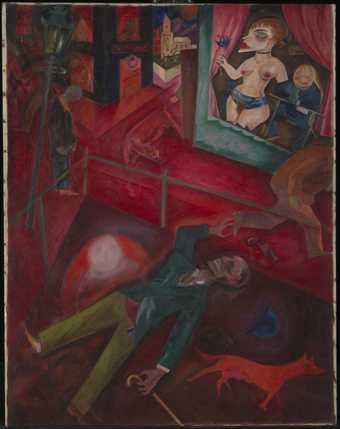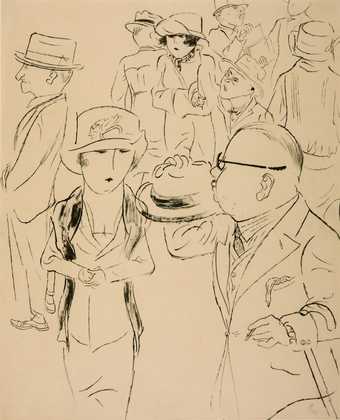It took its name from the exhibition Neue Sachlichkeit held in Mannheim in 1923. The exhibition was part of the phenomenon of the ‘return to order’ following the First World War (when artists rejected the more extreme avant-garde forms of art for more reassuring and traditional approaches); and was described by the organiser G.F. Hartlaub, as ‘new realism bearing a socialist flavour’.
The two key artists associated with Neue Sachlichkeit are Otto Dix and George Grosz, two of the greatest realist painters of the twentieth century. In their paintings and drawings they vividly depicted and excoriated the corruption, frantic pleasure seeking and general demoralisation of Germany following its defeat in the war, and the ineffectual Weimar Republic which governed until the arrival in power of the Nazi Party in 1933. But their work also constitutes a more universal, savage satire on the human condition.
Other artists include Christian Schad and Georg Schrimpf.


